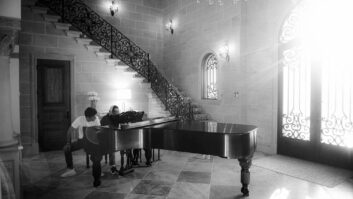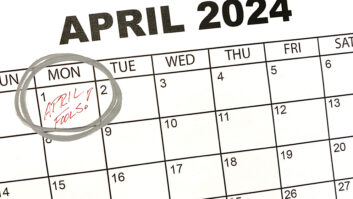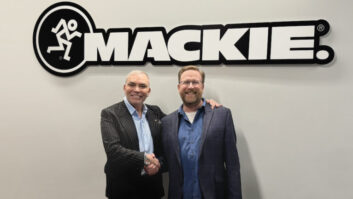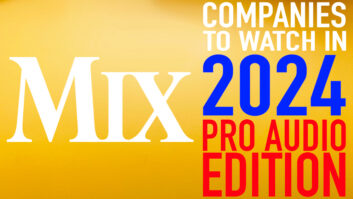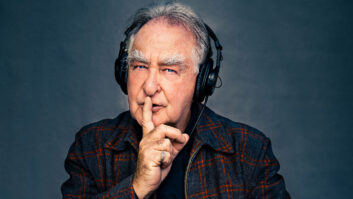
On April 22, X fans languishing in quarantine received a surprising gift from the legendary L.A. punk band: Without warning, the band suddenly released its first album since the early ’90s, and the first album made by all four original members since 1985.
Alphabetland is also the first ever X album to credit all four bandmembers—drummer DJ Bonebrake, singer Exene Cervenka, bassist/singer John Doe, and guitarist Billy Zoom—as songwriters. So, not surprisingly, it sounds like X!
Though the vibe of some of the new songs seem suited to our current woes (there’s even a song called “I Gotta Fever”), all of the tracks were recorded pre-pandemic, starting in January 2019, by producer/engineer Rob Schnapf and engineer Matt Schuessler.
Seeing as they hadn’t been in the studio together in 35 years, the bandmembers didn’t want to put pressure on their initial sessions. They weren’t even saying they were making an album. Instead, they started by revisiting a batch of songs that hadn’t previously made it past the demo stage, or that they’d recorded during a couple of years when Zoom was not with the band.
“We went into 64Sound (Highland Park, Calif.) and that first session was their re-entrance,” Schnapf observes. “We were turning those valves, opening up those pipes to their creativity. The interesting thing is there’s still all that inner creative tension in the band. It’s what makes bands good. Everybody had their voice. Everybody was listening to one another. But that tension is there.”
Schnapf and Schuessler kept rhythm parts from 64Sound. They miked Bonebrake’s kit with Schnapf’s modded Shure SM57s on top and bottom snare, a Sennheiser 421 on rack tom, AKG D112 on floor tom, Sony C48 overheads and a Soundelux U95 outside the kick drum.
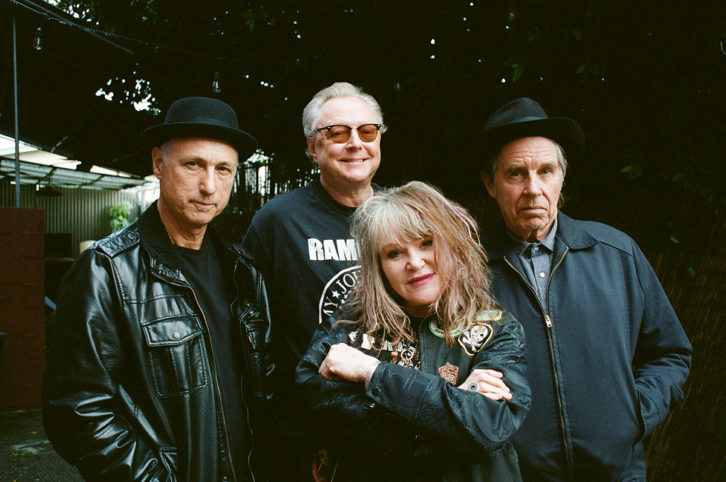
“I also had a Stager SR1A ribbon mic over the kick, in between the floor and rack tom, and a U47 [capturing] M-S,” says Schnapf. Doe’s bass went into Schnapf’s Ampeg Fliptop and was miked with a Bock 195 into a CAPI Heider mic pre, an Empirical Labs Distressor, and a Pultec EQP1A.
Next, the project moved to Schnapf’s personal studio, Mant Sound, in the Glassell Park part of Los Angeles. Here Doe and Cervenka nailed down keeper vocals for the first batch of songs, and Billy Zoom overdubbed final guitar parts separately with the engineers.
“Billy likes to do that without other people around,” Schapf says. “He would set up in the control room with his amp and we’d run a cable to his custom 2×12 cabinet, which was out in the studio, and mike that with a 57 and a ribbon—probably a [Beyerdynamic] m160 or a Stager SR2N. Billy builds his own amps, so that’s his world, and in terms of his guitar, he’s all Gretsch power.”
Exene sounded best on a Shure SM7 that the engineers put through a Coil Audio CA70 into a Pultec EQP1A and an old UA 1176. Doe sang into a vintage Russian Lomo 1989 tube mic into a Coil CA70, an Empirical Labs Distressor and a Tube-Tech CL 1B compressor.
“A lot of times, Exene and John would do vocals together,” Schnapf says. “We’d set up so that they were looking at one another and they could have that dialog.”
Two older songs from sessions in 64Sound/Mant Sound made it onto the album—“Cyrano deBerger’s Back” and “Delta 88 Nightmare”—as well as one new song, “Angel on the Road,” a poem by Cervenka that the band set to a raucous track.
Most of the new songs that the band wrote were recorded in a similar fashion, but this time drums and bass were recorded in Studio 2 at Sunset Sound.
“That’s one of my favorite places,” Schnapf says. “I thought the Doors connection would be cool [because Doors keyboardist Ray Manzarek produced X’s early studio albums]. They loved Ray, they loved The Doors. No matter how old you are, music fans are music fans.
“What was different about this second batch,” Schnapf continues, “is that the songs were coming together on the floor. We had DJ, John and Billy set up in the room. Amps were isolated, and Exene was in the piano room. We were working on songs that they didn’t get the time to play live beforehand, so it felt like we were all going along on a ride.”
“Working in Sunset was an incredible experience for me as a younger engineer,” says Schuessler. “Rob has been making records there for so long, so not only did I get the learning experience of working at that studio and hearing how it sounded, but also I got to work with someone who really knows that room and all the gear that they have.”
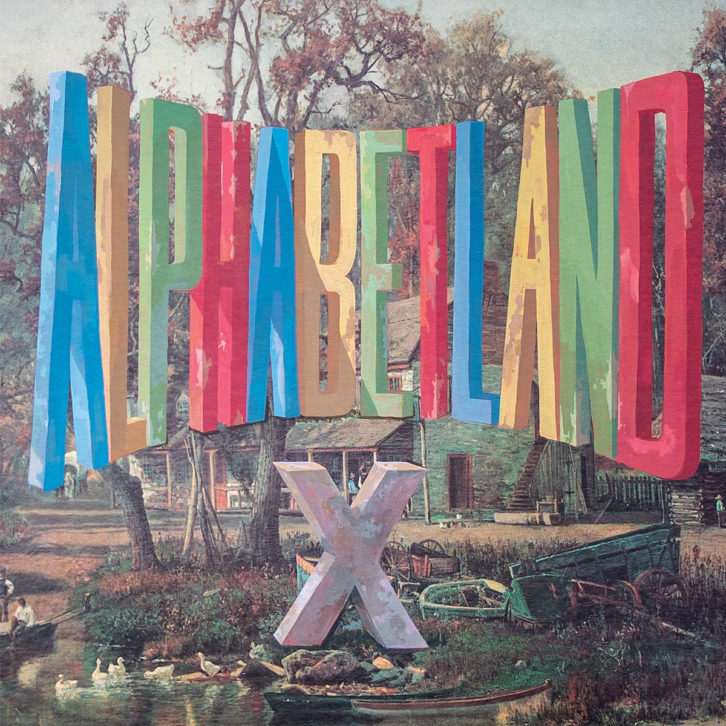
In Sunset, they used the preamps in Studio 2’s Neve 8088 console. Miking schemes started out largely the same as in the previous sessions, but Schnapf says those choices evolved during their time there. “It was daily trips to the mic locker: a pair of 47s, a pair of 67s, and there were Coles. On drums, I think I used an RCA 44 up close instead of my Stager. We also had Pultecs, 1176s—the racks are just full of everything you need,” Schnapf says.
Vocals and guitars were again tracked in Mant Sound, and then the engineers and Doe stayed at Mant Sound to mix on Schnapf’s customized MCI 428B console.
“By the time we’re mixing, though,” says Schuessler, “we’re not really fixing things. We’re not problem-solving, because all along the way when we’re tracking, we’re rough-mixing, so by the time we get to the mixing stage, things already make sense and we’re just into the fun part of mixing.”
Schnapf explains just how customized his console is and what constituted the “fun part”: “John Musgrave hot-rodded my 428B to the point where, I think only the transformers are original,” he says. “John broke up the quad bus into two stereo buses. One is like Sunset Sound’s Studio 1 console with some Jensen 990s, and the other has vintage Neve 283/Marinair transformer amp cards.
“When I first started using the board, I thought I would send some things to one stereo bus and some things to the other, like drums and bass to the Neve and the pretty stuff goes to the hi-fi bus,” he continues. “But then I discovered the brillance of the fact that John added a series parallel switch, so you could run the stereo buses parallel with one another, or you could take one bus and serially push it into the other, or you could flip the switch the other way and take the Sunset bus and run it into the Neve or the Neve into the Sunset. So I was experimenting and I sent the mix to both buses. And then I took the Sunset bus and drove it into the Neve bus. Basically, I was saturating the transformers. And the saturation manifests itself in this harmonic that brightens and opens up the Neve bus. You get the Neve low end and it opens up, and it becomes a magical thing!”
The Alphabetland mix was already under way when the pandemic hit. Doe headed back to his home in Austin, Texas, before California went into lockdown, and Schnapf and Schuessler communicated with Doe electronically so they could finish the record.
The album ends with the band providing a jazzy, quiet backdrop for a spoken-word piece by Exene: “We have all the time in the world/Until the limitless possibilities/Of youthful infinity/Turn into mortality…”
